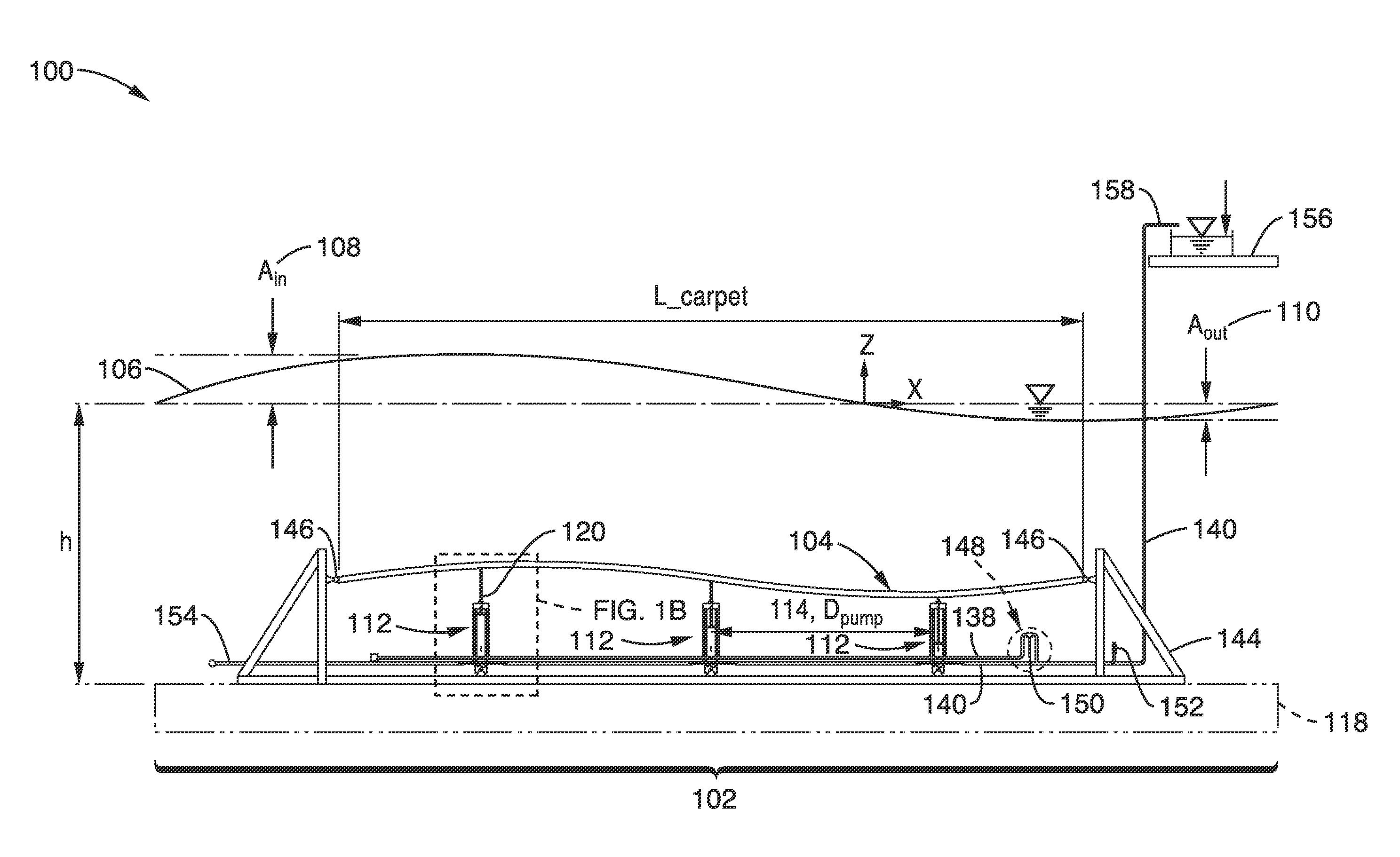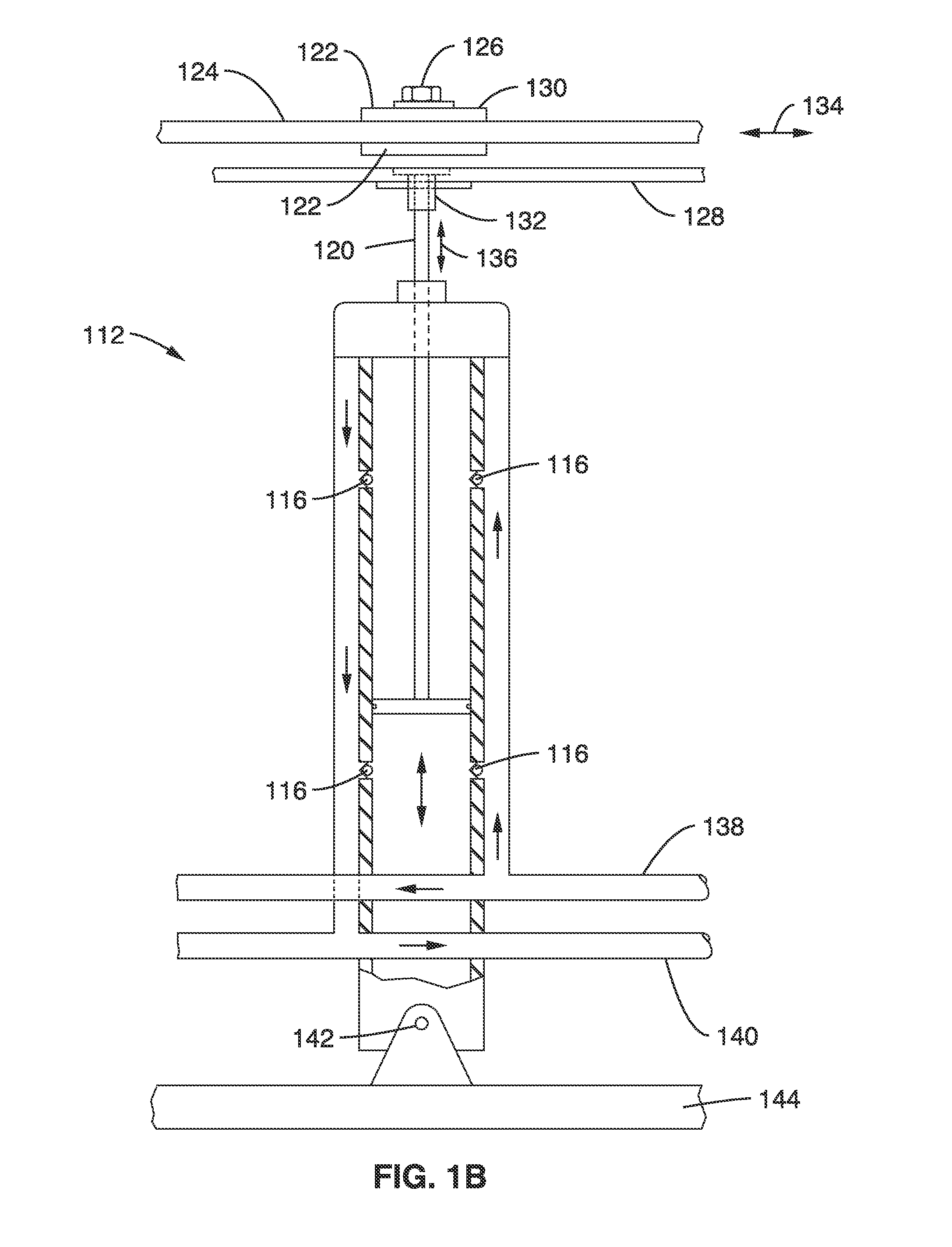Carpet of wave energy conversion (CWEC)
a technology of wave energy and transformer, which is applied in the field of transformer of wave energy, can solve the problems of only working photovoltaic systems and significant hazards to shipping
- Summary
- Abstract
- Description
- Claims
- Application Information
AI Technical Summary
Benefits of technology
Problems solved by technology
Method used
Image
Examples
Embodiment Construction
[0036]Refer now to FIG. 1A, which is a simplified side view 100 embodiment of a Carpet of Wave Energy Conversion (CWEC) 102. The CWEC 102 begins with an absorber carpet 104 that interacts with an incoming wave 106 to extract energy from the wave 106. The result is an incoming wave 106 of amplitude Ain 108 exiting the CWEC 102 with a diminished output amplitude of Aout 110. The difference between the Ain 108 and Aout 110 relates to the energy extracted from the wave 106 by the CWEC 102.
[0037]A wave absorption efficiency may be defined as a ratio
Ein-EoutEin
where the outgoing energy Eout of the wave 106 is related to Aout 110, and the incoming energy Ein of the wave is related to Ain 108. The CWEC 102 may have very high wave absorption efficiencies, approaching unity.
[0038]For the CWEC 102 to generate power, the absorber carpet 104 couples incoming wave 106 energy to one or more (preferably double action) pumps 112 spaced apart by Dpump 114. Each pump 112 has one or more check valves 1...
PUM
| Property | Measurement | Unit |
|---|---|---|
| Young's moduli | aaaaa | aaaaa |
| Young's moduli | aaaaa | aaaaa |
| Young's moduli | aaaaa | aaaaa |
Abstract
Description
Claims
Application Information
 Login to View More
Login to View More - R&D
- Intellectual Property
- Life Sciences
- Materials
- Tech Scout
- Unparalleled Data Quality
- Higher Quality Content
- 60% Fewer Hallucinations
Browse by: Latest US Patents, China's latest patents, Technical Efficacy Thesaurus, Application Domain, Technology Topic, Popular Technical Reports.
© 2025 PatSnap. All rights reserved.Legal|Privacy policy|Modern Slavery Act Transparency Statement|Sitemap|About US| Contact US: help@patsnap.com



